Art enthusiasts naturally gravitate to the U-M Museum of Art (UMMA) as well as the Stamps Gallery. But did you know there are remarkable artworks inside and outside other campus buildings? We asked a few art-savvy U-M faculty members, staff, and alumni to direct us to their favorite works.
Central Campus
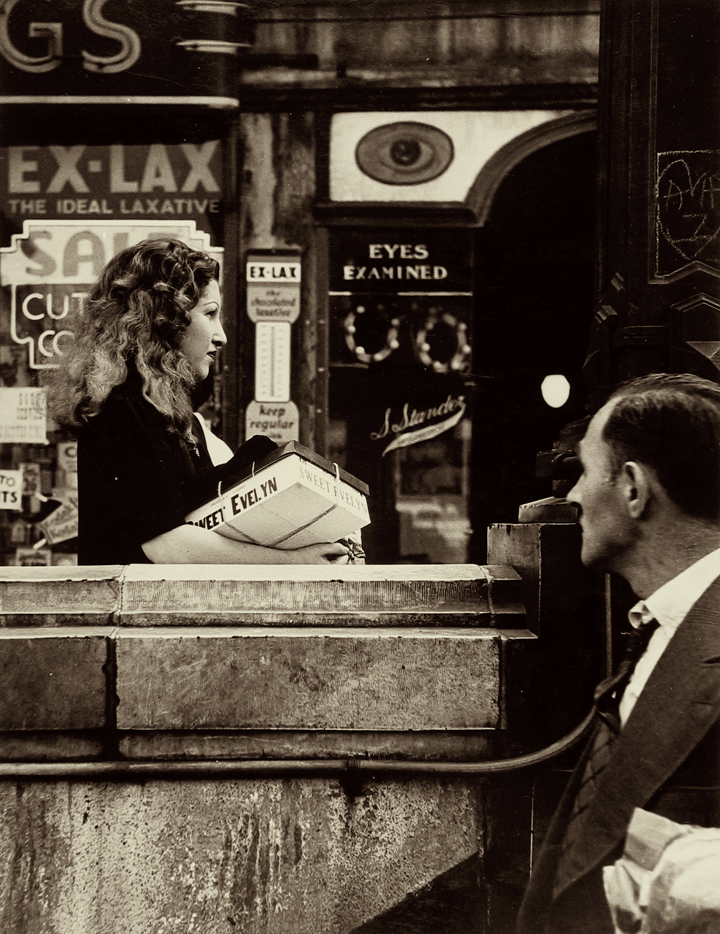
Courtesy of the Jean & Samuel Frankel Center for Judaic Studies
Jean & Samuel Frankel Center for Judaic Studies
Midcentury street photography gave expression to Jewish photographers who documented urban scenes. “These were often poignant images,” says Jennifer Friess, an UMMA curator. “The photographers are sensitive to the human condition and how that plays out in the urban environment,” she adds. Three of these photographers are represented in the Frankel Center in the Thayer Building. In “East Side Sweet Evelyn” (1938), Morris Engel captures a man looking at a woman while descending a stairway into the subway. The woman carries a box labeled “Sweet Evelyn.” A store behind them, advertising eye examinations, highlights their exchange of glances.

Courtesy of Ross Business School
Ross School of Business
Friess sometimes walks through the Ross School of Business, where she can see more than 250 contemporary pieces, both abstract and representational. Among her favorites are a series of nine etchings by Chris Johanson, including “Perceptions,” created in 2007. “There is this element of irreverence in the work, the short cheeky sayings and the very mundane subject matter, yet it hits a nerve. His playful way of drawing smacks of being childlike, just enough to get your imagination going,” Friess says. Check out the Ross collection here.

Courtesy of the Institute for the Humanities
Institute for the Humanities
The Institute for the Humanities, with the support of the History of Art Department, commissioned a mural from Iranian artist Mehdi Ghadyanloo for its atrium in the Thayer Building. The mural, “Days Ahead,” depicts a group of Syrian refugees entering a boat, attempting to escape their war-torn homeland. “The image evokes hopefulness as well as uncertainty and alludes to both community and isolation,” says Amanda Krugliak, ’84, arts curator for the institute. Ghadyanloo, whose murals appear throughout Tehran, came to Ann Arbor to paint the mural in 2016. “A project such as this reminds us of the great contributions made by those who come to this country from other cultures, how much they add to our human experiences,” Krugliak says.
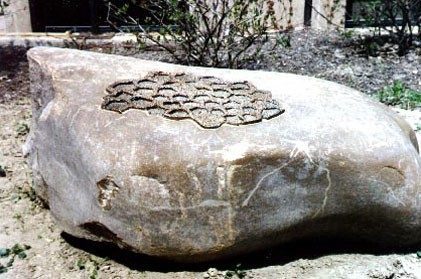
Harrison M. Randall Laboratory
Krugliak also points visitors to Michele Oka Doner’s 1996 bronze relief on a glacial fieldstone. Titled “Positron,” the stone sculpture sits in front of the Randall Lab on Church Street. Krugliak says Doner, ’66, MFA’68, HDFA’16, “has spent a lifetime inspired by the natural world, whose images and structures she uses in creating more formal statements in art, furniture, jewelry, and functional objects.”
North Campus

Photo by Davi Napoleon
The Gerald R. Ford Presidential Library
As a U-M student, Mark Tucker, MFA’85, discovered George W. Rickey’s stainless-steel sculpture on the east side of the Ford Library. The 1982 kinetic work, titled “Two Open Triangles Up, Gyratory II,” moves in response to the slightest breeze. If the wind is not moving it naturally, visitors should feel free to gently push the piece. “The light bouncing off the kinetic aluminum creates an infinite number of visual configurations that are endlessly fascinating,” says Tucker, art director for the Lloyd Hall Scholars Program.

Photo by Davi Napoleon
Herbert H. Dow Building
The 1992 Alice Aycock sculpture “Summaries of Arithmetic through Dust, Including Writing Not Yet Printed” is made of steel and aluminum but to Tucker “seems to move in space while standing perfectly still.” The imposing white piece stands on the south side of the Dow Building. Aycock was inspired by elements from “various 2- and 3-dimensional scientific diagrams that,” she says, “attempt to explain various aspects of the universe.”
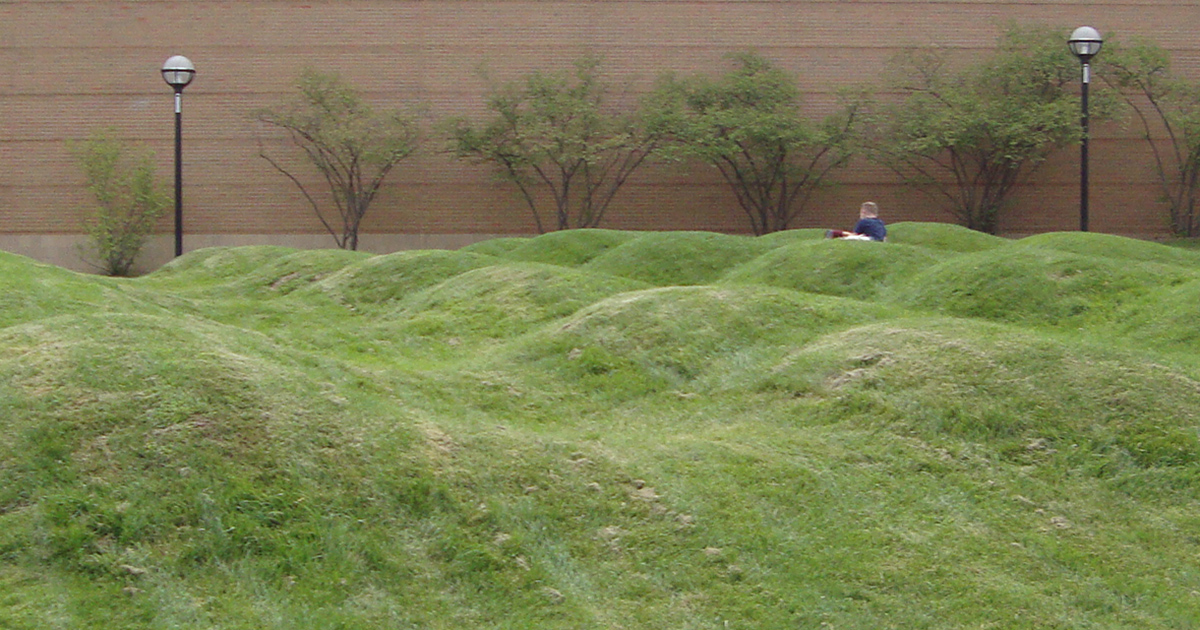
Photo by Davi Napoleon
Francois-Xavier Bagnoud Building
Maya Lin, best known for the Vietnam Veterans Memorial in Washington, D.C., created “Wave Field,” a 90-by-90-foot sculpture, purely from earth. “Her work is so powerful and so minimal,” says UMMA’s Friess. “This work is so playful. You’re able to interact with it. It can envelope you.” Students sometimes settle into the work next to the engineering building, using the curves in the grass as armchairs to relax and read.
Medical Campus
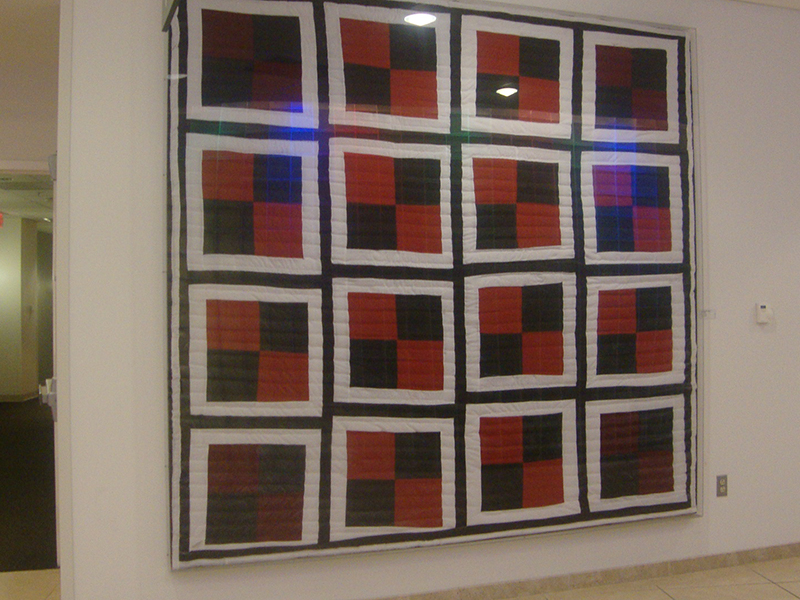
Courtesy of the Samuel and Jean Frankel Cardiovascular Center
Samuel and Jean Frankel Cardiovascular Center
Among the selected paintings, sculptures, and textiles in the Samuel and Jean Frankel Cardiovascular Center is a simple 2006 quilt, “Windmill Patch,” in the C.S. Steve Baum Gateway, a hallway that connects the center to other hospitals. The women of Gee’s Bend, a small, remote black community along the Alabama River, made this quilt, and many others, to keep their families warm in unheated shacks in the early 20th century. These descendants of slaves continued to recycle old clothes and other materials into quilts that were later honored in a series of U.S. postage stamps and a Smithsonian exhibit. Linda Larin, associate hospital director for Cardiovascular and Neurosciences Programs, worked with an independent curator to place art, including the quilt, throughout the center.

Photo by Ted Pitynski
Kellogg Eye Center
The Kellogg Eye Center inspires visitors to value eye care by giving them access to an outstanding art collection that includes works by Alexander Calder and Joan Miró. Paul R. Lichter, founding director of the center, says Kellogg commissioned the 2010 work “Rods and Cones,” which hangs inside the Wall Street entrance. The piece, created by Laurel Pitynski, has elements of rods and cones (the light sensing cells within the retina of the human eye), strands of DNA, and elements of diabetes as an homage to the neighboring Brehm Center for Diabetes Research, says Lichter.
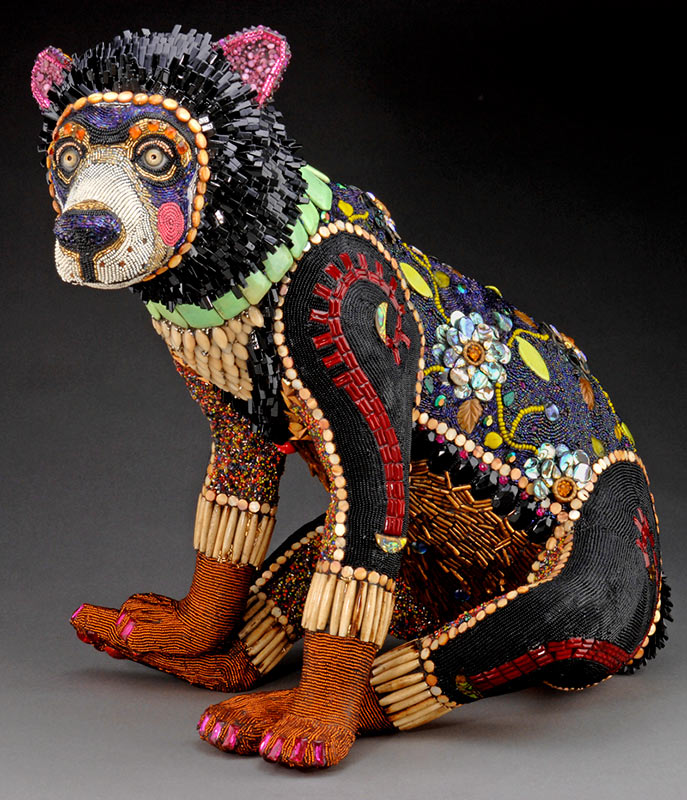
Photo by Larry Sanders
Elaine Sims, ’68, the director of the hospital’s Gifts of Art program, sometimes finds treasures at the Ann Arbor Art Fair. “That’s where I found ‘Little Bear,’” she says of a 2006, mixed-media beaded work by Chicago artist Betsy Youngquist. Sims says “Little Bear” watches passersby in the second-floor hallway through human prosthetic eyes. “He seems to look at each person with compassion and care.” Sims notes that hospitals everywhere are recognizing the value of art, often selecting significant pieces “that have a job to do and are not just intended to sit on the wall and look pretty.”
Davi Napoleon, ’66, MA’68, is a theater historian and freelance writer. She is the daughter of Fay Kleinman, whose painting “Sunday Morning” is part of the collection at U-M East Ann Arbor Health and Geriatrics Center.




